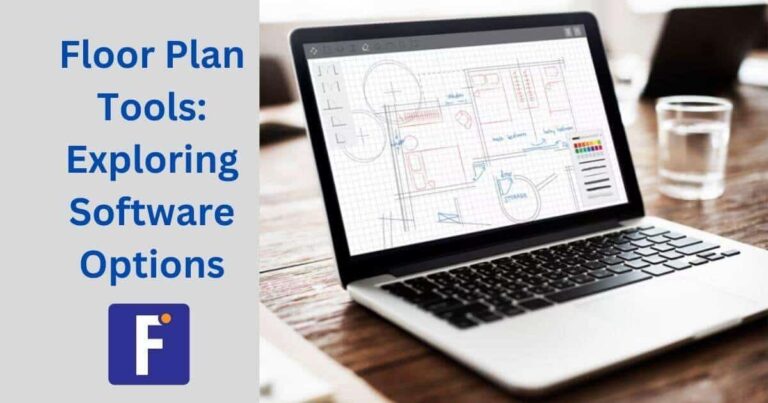Floor plans are the part of industries. We can use floor planning software tools for architecture, engineering, facilities management and event planning. It provide a detailed and accurate representation of the layout of a space, whether it’s a building, an industrial plant or an outdoor space, and are ideas for making a room planner. Creating floor plans requires accuracy and efficiency, and software has become a critical tool in this process. Explore various floor plan software options, their key features and how they can help streamline this critical process.
The Importance of Floor Plans
Before we dive into the floor plan software tools available, it’s important to understand why floor plans are critical in various industries.
Design and Construction
Architects use floor plans to visualize how interior spaces will be laid out, while engineers use them to design electrical, plumbing and HVAC systems.
Facilities Management
In industrial and commercial facilities, floor plans are used for efficient asset management and maintenance. Maintenance teams can refer to these drawings to identify the location of equipment and systems, streamlining repairs and regular inspections.
Event Planning
When organizing events, such as conferences, concerts or trade shows, floor plans are crucial for determining space layout, booth locations and managing the flow of people.
Security
Floor plans also play a crucial role in safety. In the event of an emergency, such as fire or evacuation, building occupants can use floor plans to identify safe escape routes and the location of fire extinguishers and emergency exits.
Floor Plan Software Options
As technology has advanced, numerous software options for creating floor plans have emerged. Below, we share the valuable software that can use for floor plan.
AutoCAD
AutoCAD, developed by Autodesk, is one of the most popular and widely used computer-aided design (CAD) programs in the world. It has earned a solid reputation for creating floor plans in both 2D and 3D.
User-Friendly Interface: AutoCAD has an intuitive user interface that makes it easy to create and edit floor plans.
Precise Drawing Tools: Offers a wide range of drawing tools that enable pinpoint accuracy in creating floor plans.
Customization: Users can customize commands and keyboard shortcuts to tailor the software to their specific needs.
Real-Time Collaboration: Enables real-time collaboration on projects through the cloud.
AutoCAD is widely used in architecture, civil and mechanical engineering, and is a solid choice for those who require high accuracy in their floor plans.
Cedreo
It is known for its ease of use and is especially popular with architects, interior designers and landscape architects.
Intuitive 3D Modeling: Enables rapid creation of 3D models, which is ideal for visualizing interior and exterior designs.
Extensive Component Libraries: Offers a wide variety of predefined components that facilitate the creation of detailed models.
Real-Time Rendering: Enables real-time visualization of what a finished design will look like.
Cedreo is ideal for creative professionals who want an accessible and efficient modeling tool.
Revit
Revit, also developed by Autodesk, focuses on the creation of floor plans in the field of architecture and construction. Unlike AutoCAD, Revit is a BIM (Building Information Modeling) software that focuses on creating intelligent building models.
BIM Modeling: Allows the creation of three-dimensional building models and stores detailed information about each element of the building.
Large Project Collaboration: Facilitates collaboration on large and complex building projects.
Energy Analysis: Helps architects evaluate the energy performance of buildings from the earliest stages of design.
Sweet Home 3D
Sweet Home 3D is an open source software option that focuses on creating floor plans for residential interiors and small commercial spaces.
3D Interior Design: Enables the creation of 3D renderings of interior spaces, making it easier to make design decisions.
Furniture Library: Includes an extensive library of furniture and decorative objects to drag and drop into the design.
2D and 3D Visualization: Provides 2D and 3D views of the design, making it easy to understand what the finished space will look like.
Microsoft Visio
Microsoft Visio is a diagramming tool that is widely used in business and IT environments to create diagrams and floor plans. While not specifically designed for creating detailed architectural drawings, it is a solid choice for visually representing processes and workflows.
Wide Variety of Templates: Offers a variety of predefined templates for flowcharts, organization charts and network diagrams.
Integration with Microsoft Office: Enables collaboration and integration with other Microsoft Office applications.
Shape Customization: Allows you to customize shapes and diagram elements according to the user’s needs.
Microsoft Visio is ideal for professionals who need to create diagrams and workflows rather than detailed architectural floor plans.
How to Choose the Right Tool?
Choosing the right software tool for floor plan design depends largely on the specific needs of your project and your level of experience. Here are some key considerations to keep in mind when selecting the right tool:
Type of Project: Your choice of tool should be consistent with the type of work you do.
Level of Detail: Some tools, such as AutoCAD and Cedreo, are ideal for projects that require a high level of detail, while others, such as Sweet Home 3D, are better suited for simplified renderings.
User Experience: Consider your level of experience with design software. Some tools, such as Cedreo, are known to be easier for beginners to learn.
Collaboration: If you work in a team and need to collaborate in real time on projects, look for tools that offer cloud collaboration capabilities.
Budget: Be sure to consider the cost of the tool and whether it fits your budget. Some options are free or open source, while others require an investment.
Conclusions
Creating floor plans is a part of different industries. It is the right software tools that make gives us accuracy, efficiency and productivity. The options mentioned above, such as AutoCAD, Cedreo, Revit, Sweet Home 3D and Microsoft Visio, offer a variety of features and capabilities that can accommodate a wide range of projects and needs.
